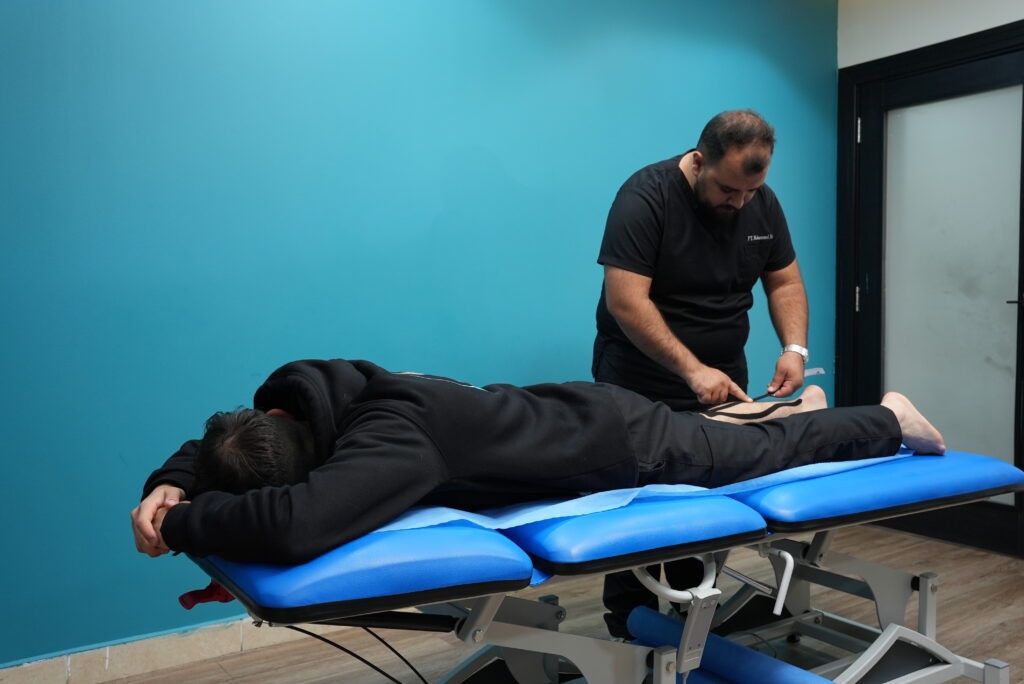Understanding Ankle Sprains: Symptoms, Causes, Degrees, Treatments, and the Role of Physiotherapy
Kilani
January 28, 2025

Ankle Sprains Introduction
Ankle Sprains are one of the most common musculoskeletal injuries, particularly among athletes and physically active individuals. This injury occurs when the ligaments that stabilize the ankle joint are stretched or torn due to excessive force or abnormal movement. Understanding the symptoms, causes, degrees of severity, and treatments—including the critical role physiotherapy plays—is essential for effective management and recovery.
Symptoms of Ankle Sprains
The symptoms of an Ankle Sprains can vary based on the severity of the injury but typically include:
Pain: Sharp or throbbing pain, particularly during movement or weight-bearing activities.
Swelling: The ankle may swell rapidly after the injury.
Bruising: Discoloration around the ankle due to damaged blood vessels.
Limited Range of Motion: Difficulty moving the ankle or performing normal activities like walking.
Instability: A feeling of the ankle “giving way,” especially in severe cases.
This is the most symptom that we see with ankle sprain patients who we face in kilani physiotherapy center after few months of injuries
Causes of Ankle Sprains
Ankle Sprains often occur during activities that place sudden stress on the ankle joint, such as:
Sports Injuries: Jumping, running, or pivoting in sports like basketball, soccer, and tennis.
And these the most common causes we see in Kilani physiotherapy center because we work mostly with athletes
Uneven Surfaces: Walking or running on uneven terrain can lead to awkward foot placement.
Improper Footwear: Shoes that lack support or are inappropriate for the activity can increase the risk.
With this cause our physiotherapists noticed that mostly they have foot problem like flat feet
Previous Injuries: A history of ankle sprains can weaken the joint and make re-injury more likely.
Trauma: A sudden impact, such as landing awkwardly from a height.
Degrees of Ankle Sprains
Ankle Sprains are classified into three degrees based on the extent of ligament damage:
Grade 1 (Mild):
Ligaments are stretched but not torn.
Symptoms: Mild pain, slight swelling, minimal functional loss.
Grade 2 (Moderate):
Partial tearing of ligaments.
Symptoms: Moderate pain, noticeable swelling, bruising, and difficulty walking.
Grade 3 (Severe):
Complete tear of the ligament(s).
Symptoms: Severe pain, significant swelling, bruising, inability to bear weight, and marked joint instability.
Treatment Options for Ankle Sprains
Treatment of ankle sprains focuses on pain management, reducing swelling, restoring function, and preventing future injuries. The approach depends on the severity of the sprain.
Initial Treatment: R.I.C.E Protocol
Rest: Avoid activities that stress the ankle.
Ice: Apply cold packs for 15-20 minutes every 1-2 hours during the first 48 hours.
Compression: Use elastic bandages to reduce swelling.
Elevation: Keep the ankle above heart level to minimize swelling.
Medications
Over-the-counter pain relievers, such as ibuprofen or acetaminophen, to manage pain and inflammation.
Advanced Treatments
Immobilization: Braces or splints to support the ankle in severe cases.
Physical Therapy: A critical component for restoring strength, balance, and range of motion.
Surgical Intervention: Rarely needed but may be required for chronic instability or severe ligament damage.
Role of Physiotherapy in Treatment
Physiotherapy plays a pivotal role in the recovery and rehabilitation of ankle sprains, ensuring a safe return to normal activities and reducing the risk of re-injury.
1. Pain and Swelling Management
Techniques: Physiotherapists may use modalities like ultrasound therapy, ice therapy, or electrical stimulation to alleviate pain and inflammation.
2. Restoring Range of Motion
Early-stage therapy focuses on gentle stretching and mobilization exercises to regain normal ankle movement.
3. Strengthening Exercises
Target Areas: Strengthening the muscles around the ankle, foot, and lower leg to support joint stability.
Examples: Resistance band exercises, calf raises, and isometric strengthening.
4. Balance and Proprioception Training
Importance: Improves coordination and reduces the likelihood of future sprains.
Examples: Standing on one leg, wobble board exercises, and dynamic balance activities.
5. Functional Training
Prepares patients for specific activities, such as walking, running, or returning to sports, with sport-specific drills.
6. Manual Therapy
Techniques like joint mobilization or massage to reduce stiffness, improve circulation, and alleviate discomfort.
We focus on this type of treatment in our center
7. Education and Injury Prevention
Physiotherapists educate patients on proper footwear, warm-up routines, and safe exercise practices to prevent recurrence.
Conclusion
Ankle sprains, while common, can significantly impact mobility and quality of life if not properly managed. Recognizing the symptoms, understanding the causes, and seeking appropriate treatment are essential steps toward recovery. Physiotherapy serves as an indispensable part of the treatment plan, offering evidence-based techniques to restore function, enhance stability, and prevent future injuries. Whether the sprain is mild or severe, a structured approach combining medical care and rehabilitation ensures optimal outcomes and a safe return to daily activities or sports.
f you suffer from this condition, do not hesitate to contact us at our branches in Jordan and Dubai.
To learn about treatments for other injuries, check out our Athletic Rehabilitation Center page.
